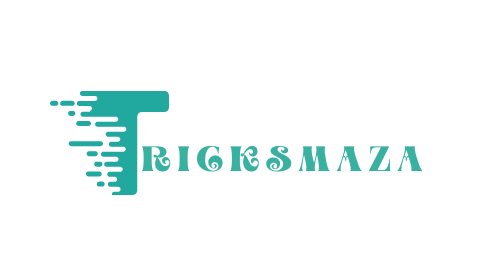Telemedicine has revolutionized healthcare, allowing patients to receive medical advice from the comfort of their own homes. Teledentistry is the dental industry’s response to this trend, offering patients a convenient way to access dental care without needing to visit the office for every concern. Whether it’s a quick consultation, a follow-up, or even emergency advice, teledentistry is becoming an essential part of modern oral healthcare.
In this article, we’ll explore the growing role of teledentistry, how it works, and why it can be a game-changer for your oral health.
1. What is THIS?
Teledentistry refers to the use of digital communication technology to provide dental care and consultation remotely. Using tools like video conferencing, phone calls, and online chats, patients can connect with their dentists for a range of services. While teledentistry can’t replace in-office treatments like cleanings or fillings, it offers a convenient option for consultations, follow-ups, and certain diagnostic services.
It’s particularly helpful for patients who live in remote areas, have mobility issues, or simply want to minimize the time spent in a dental office.
2. How Does Teledentistry Work?
Teledentistry operates through a virtual platform that connects patients and dental professionals. Here’s how it typically works:
- Scheduling an Appointment: Patients can book an appointment through the dental office’s website or app for a virtual consultation.
- Video or Audio Call: At the scheduled time, the patient and dentist connect via a video call or phone to discuss the issue. The dentist may ask about symptoms, view the patient’s mouth through the camera, or review photos that the patient has submitted beforehand.
- Follow-Up or Referral: Based on the consultation, the dentist can provide recommendations, prescriptions (if needed), or a referral to visit the office for further treatment.
3. Benefits of Teledentistry
Teledentistry brings several advantages to both patients and dental professionals:
a. Convenience and Flexibility
Patients can receive dental care without leaving their homes, making it easier to manage appointments around busy schedules. This is especially useful for people who find it difficult to take time off from work or have family commitments.
b. Improved Access to Care
For patients living in rural areas or places with limited access to dental clinics, teledentistry provides a much-needed alternative. It ensures that patients can still consult with a dentist Greensboro NC even if in-person visits are challenging.
c. Faster Access to Emergency Care
If you experience a dental emergency—such as a toothache or trauma—teledentistry can offer immediate advice. Dentists can guide you on temporary relief methods until you can make it to the office for a hands-on evaluation and treatment.
d. Cost-Effective Care
Since teledentistry consultations often require less time and fewer resources than in-office visits, they can be a more affordable option for patients. This is particularly helpful for follow-ups or consultations that don’t necessarily require physical examination.
4. Common Uses for Teledentistry
Teledentistry can address a variety of dental concerns:
a. Initial Consultations
Patients who are unsure about their symptoms or want to get an opinion on an issue can schedule a virtual consultation for an initial assessment. This helps determine if a follow-up visit to the office is necessary.
b. Orthodontic Consultations
For patients undergoing orthodontic treatment, teledentistry allows for remote check-ins. Orthodontists can assess progress via video or images sent by the patient, reducing the need for frequent office visits.
c. Post-Treatment Follow-Ups
After procedures such as tooth extractions, fillings, or root canals, a virtual check-up can monitor healing without requiring the patient to come in unless there are complications.
d. Second Opinions
Patients seeking a second opinion on a treatment plan can use teledentistry to consult with another dentist without the need for an in-person visit.
5. Limitations of Teledentistry
While teledentistry is a useful tool, it has some limitations:
- No Physical Treatment: Procedures like cleanings, fillings, or extractions cannot be performed remotely.
- Dependent on Technology: Access to teledentistry relies on having a reliable internet connection and a camera-enabled device.
- Limited Examination: Dentists cannot fully examine areas of the mouth that may require tactile evaluation, like checking for lumps or feeling the firmness of teeth and gums.
6. When to Use Teledentistry vs. In-Person Visits
Teledentistry is best suited for situations where immediate physical treatment is not required. Consider using teledentistry for:
- Consulting about dental pain before scheduling an emergency visit.
- Discussing treatment plans and options.
- Follow-ups after surgery or a procedure.
However, for procedures like professional cleanings, fillings, crowns, and extractions, an in-person visit is necessary.
7. The Future of Teledentistry
As technology continues to advance, so too will the capabilities of teledentistry. Some future innovations may include:
- 3D imaging tools that allow dentists to take more precise virtual impressions.
- Remote diagnostic tools for advanced assessments of the mouth.
- AI-assisted virtual consultations, offering real-time analysis and recommendations.
Tele dentistry is likely to continue growing in popularity, especially as patients seek more convenient healthcare options.
Conclusion
Tele dentistry is transforming the way we access dental care, making it more convenient, affordable, and accessible. Whether you need a consultation for a minor issue or a follow-up after a procedure, tell dentistry offers a flexible alternative to in-person visits. While it may not replace traditional dental care, it serves as an essential complement to the services provided in dental offices.
As technology evolves, so will the applications of teledentistry, making oral healthcare more patient-friendly and efficient than ever before.



More Stories
Dental Implant Pricing: Expert Guide & Insights
Your Path to Parenthood: Affordable & Transparent Surrogacy
Multivitamins for Women’s Stress Relief